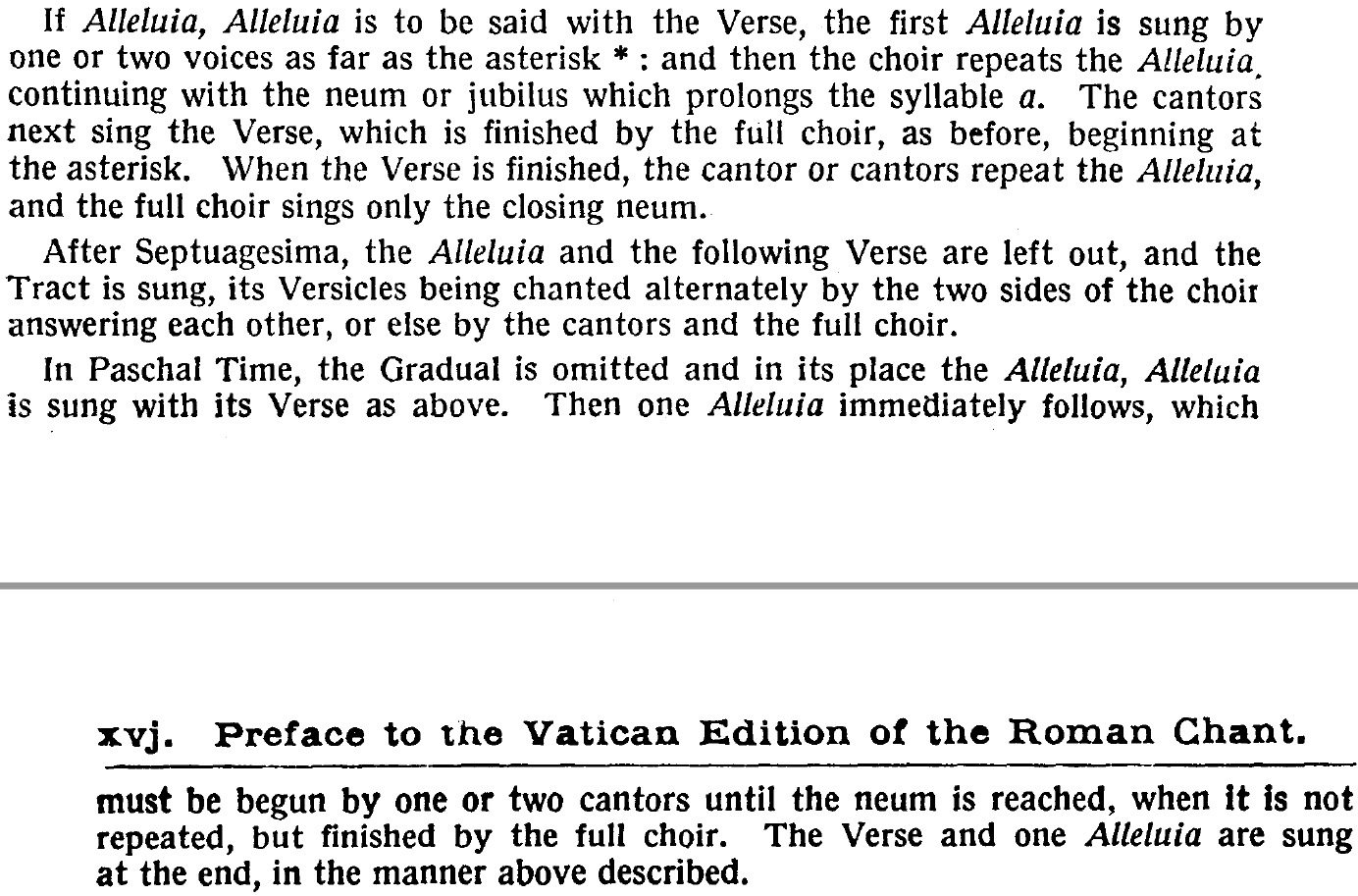Anthem vs. Antiphon
-
I have just noticed--quick lad that I am--that in the Liber Usualis, the Simple Tones for the Marian Antiphons are called anthems, and the Solemn Tones are called Antiphons.
What is the reason for that?
Thanks.
KennethThanked by 1Chris Garton-Zavesky -
What edition do you have? I have a reprint of the 1963 edition before me and see the word Anthems used on pp. 273 & 277 alike, also on p. 592 of the Liber Brevior. I don't see the solemn tones labeled as antiphons in either English edition.
-
'Anthem' is an English contraction of 'antiphon', which means that both are versions of the same thing, or, either could be either. However, we nowadays think of 'anthem' as a sacred choral piece, and 'antiphon' as chant. This doesn't exactly answer your question, nor does it seek to probe the minds of those who are responsible for putting together the LU,
-
Both my editions appear to be reprints and not current publications—1963 and 1953. Both have the familiar “Ant.” for the solemn tones and “anthem” for the simple.
Jackson, since I teach English, that’s a very interesting example of a case where variable translations end up creating a distinction in the second language—a distinction, perhaps, without a difference.
Many thanks.
Kenneth
-
Ok, so you mean the annotation above the mode indication, but see the rubric on p. 273, where the solemn tones are also referred to as anthems.Thanked by 1CHGiffen
-
Ah, yes, I see it. So then the heading on 276 should be read as “same anthems in their simple tone.” I would have put a matching heading on 273. Now that we have looked at this from every angle, I thank you both very much.
Kenneth -
Just for fun, I decided to look up the definition of anthem to see if the etymological info would give us any clue, and it did not disappoint.ORIGIN
Old English anten, antifne (denoting a composition sung antiphonally), from late Latin antiphona (see antiphon). The spelling with th, which began in the 16th century, was on the pattern of similar words such as Antony, Anthony.
 750F043D-43F7-4BC9-ADDD-9C50CFCF2A42.jpeg1125 x 1915 - 623K
750F043D-43F7-4BC9-ADDD-9C50CFCF2A42.jpeg1125 x 1915 - 623K -
Whether it is correct or not, I do not know, but I was taught that the Marian antiphons are not true antiphons in that they are not associated and chanted with a psalm verse; in an attempt to avoid confusion the terms votive antiphons or breviary anthems are sometimes used instead.
-
RevAMG—
This is actually how my interest was piqued. I asked my schola Director where I could find the
Marian hymns that we have been singing at the end of our TLM, and he responded, “Do you mean the Marian antiphons?” But the antiphons don’t frame anything. So I was confused. If in fact it’s a term that includes what we call hymns or anthems, that makes sense.
And rereading the rubrics periodically is a very good idea. I was in a schola at one of the oldest indult Masses (now alas gone the way of all Traditiones Custodes), and after many years of shifts in directors etc, somebody reread the rubrics for the first Sunday of Advent and discovered that we were not following the rubrics for the Alleluia
Thanks again to all.
KennethThanked by 1RedPop4 -
And thanks for the etymology lessons—love those.
-
Yes, that rubric is anomalous and was revised in the new rite. It's the only instance I can think of where something is "intoned" again on the repetition after the verse. And of course that's throughout the year (except after Septuagesima), not only in Advent.somebody reread the rubrics for the first Sunday of Advent and discovered that we were not following the rubrics for the Alleluia

 rubrics.jpg1384 x 913 - 394K
rubrics.jpg1384 x 913 - 394K
Welcome to the MusicaSacra Forum!
To participate in the discussions on Catholic church music, sign in or register as a forum member, The forum is a project of the Church Music Association of America.
Categories
- All Discussions21,104
- General Music Discussion8,217
- Job Openings197
- Management of Music Programs850
- Choral Matters533
- Church Documents and Rubrics524
- CMAA Notes302
- Events716
- For Newcomers: Read First26
- Sacred Polyphony546
- Hymnody872
- Gregorian Chant: General2,697
- ↳ Graduale Romanum and Liber Usualis368
- ↳ Graduale Simplex60
- ↳ Semiology63
- Vernacular Plainsong696
- Anglican Use and Anglican Chant68
- Organ, Other Instruments and Repertoire435
- New Composition/Works in Progress1,290
- Recordings230
- Music for Hispanic Ministry159
- Music Education: Children211
- Music Education: General222
- News Items245
- Positions Wanted2
- General Discussion: Catholicism739
- Amusements177
- General Discussion1,033
- Opinions117
